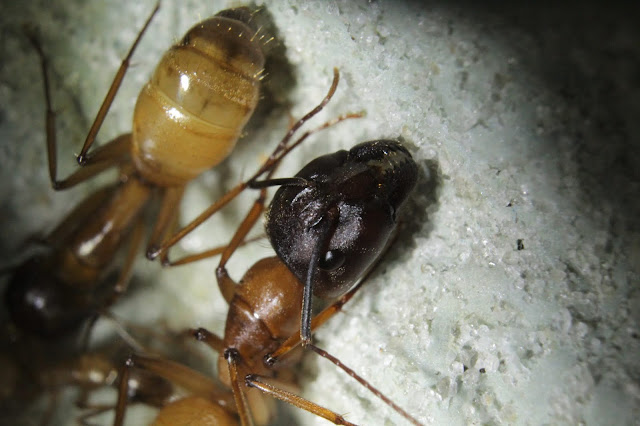My brief experience with Macro Photography (2/16/2021)
Over the past few weeks, as my ant colonies have been coming out of diapause, I have been diving into the world of macro photography. There are many different ways to take stunning photos of ants and other small things, ranging from simple lens-extension tubes to professional-grade dedicated macro lenses.
For photographing my ants, I got both a screw-on macro lens, which was essentially a magnifying glass over the lens of my camera (Canon Rebel T6) and a set of extension tubes, which increase the distance between the lens and the camera's sensor, allowing a smaller minimum focus distance.
I quickly fell in love with the clarity and precision of the extension tubes. Although I could not adjust the aperture of the lens, I figured out a way to adjust it while the extension tubes were off, and managed to retain my aperture settings even after taking the lens off of the camera body. The screw-on macro lens worked nicely too, but because of the design it had something of a fisheye effect, as well as inferior depth of field.
Canon Rebel T6 with Extension tubes- My current setup
Attached are some pictures I took recently of some of my colonies using this setup. For lighting, I used a pair of studio lights that I found on amazon a few months ago. Personally, I don't really like the color temperature as it drowns out some of the warmer colors, but after fiddling with some of the camera's settings I was able to balance it out.








Comments
Post a Comment